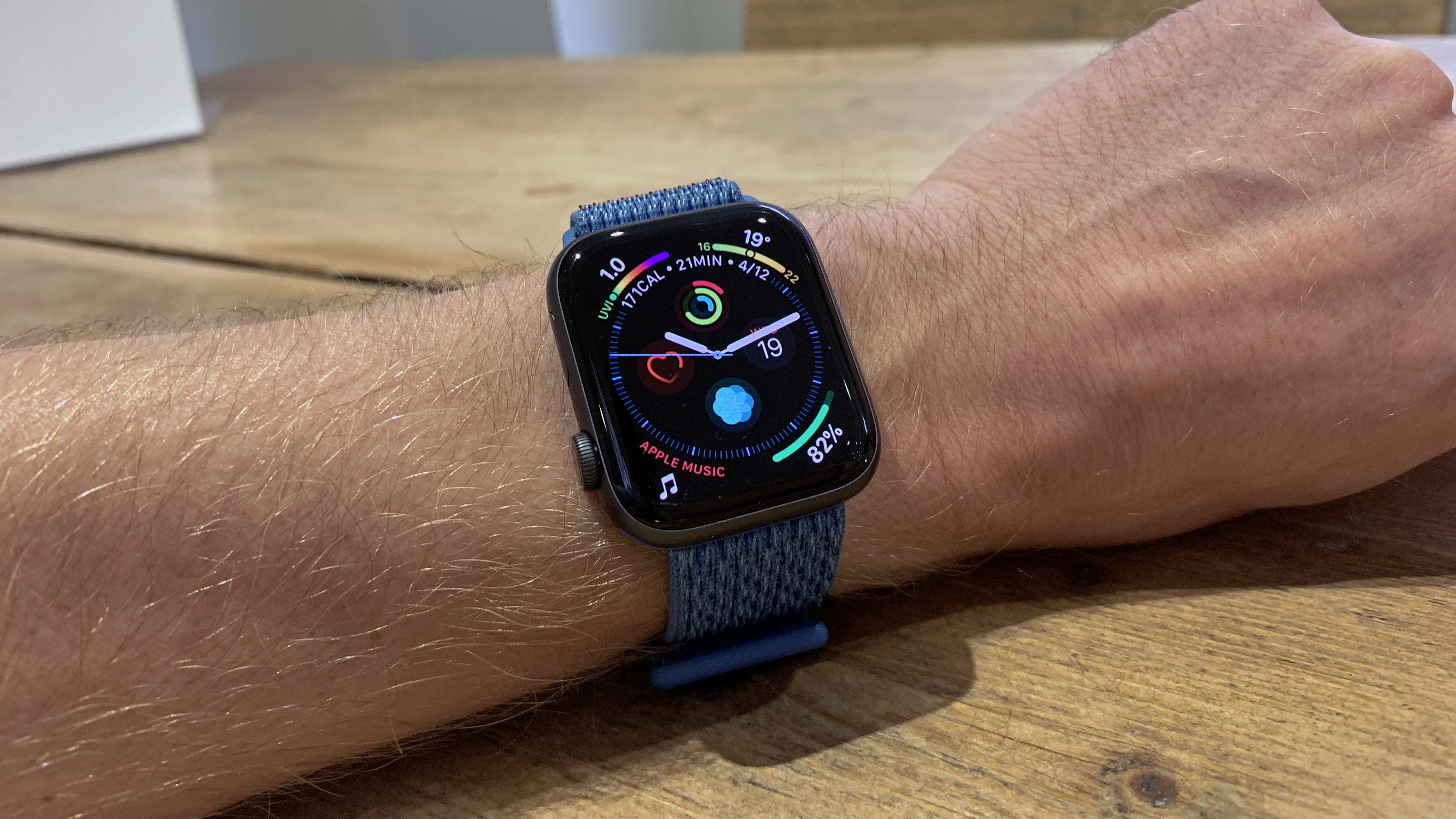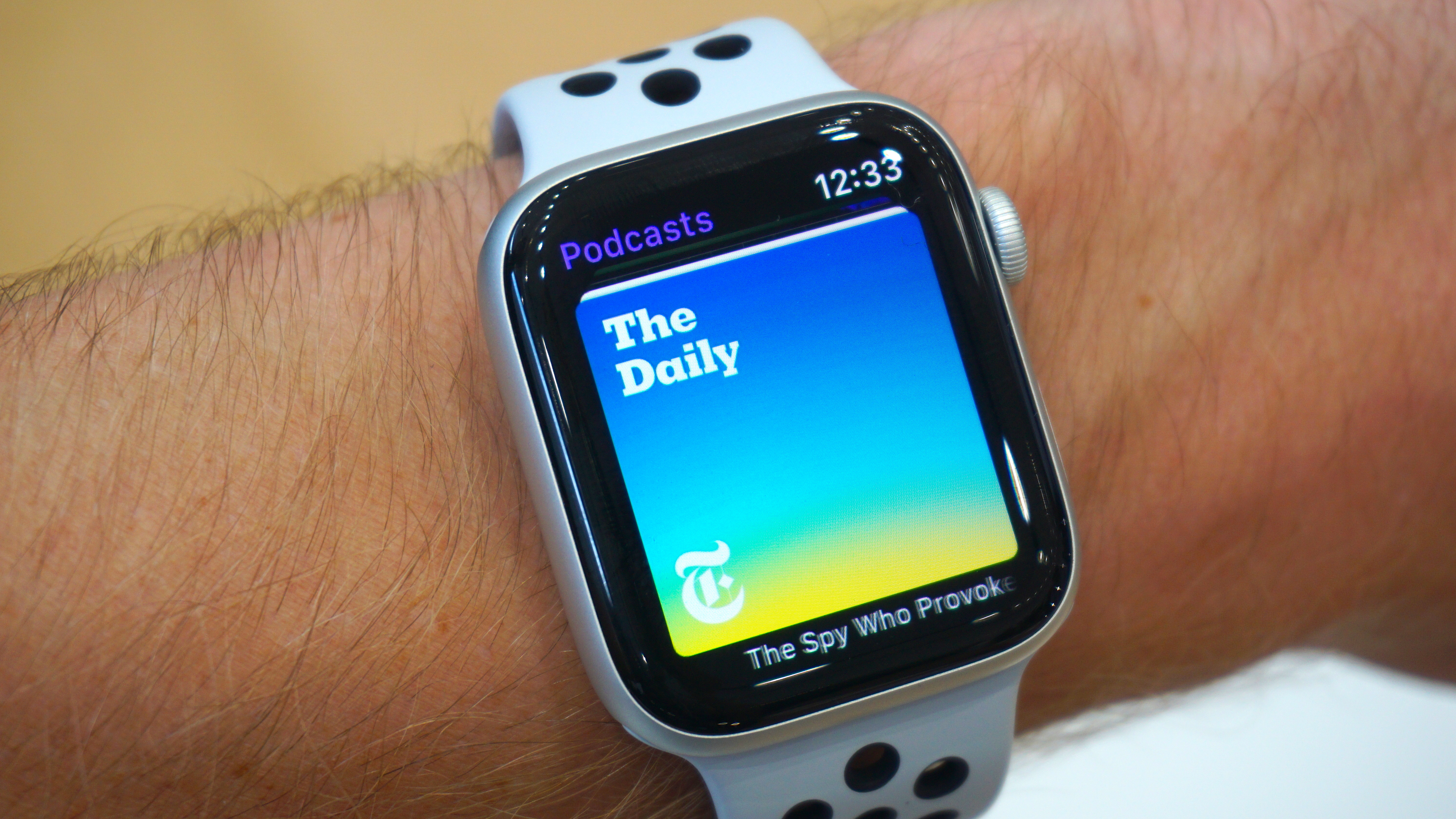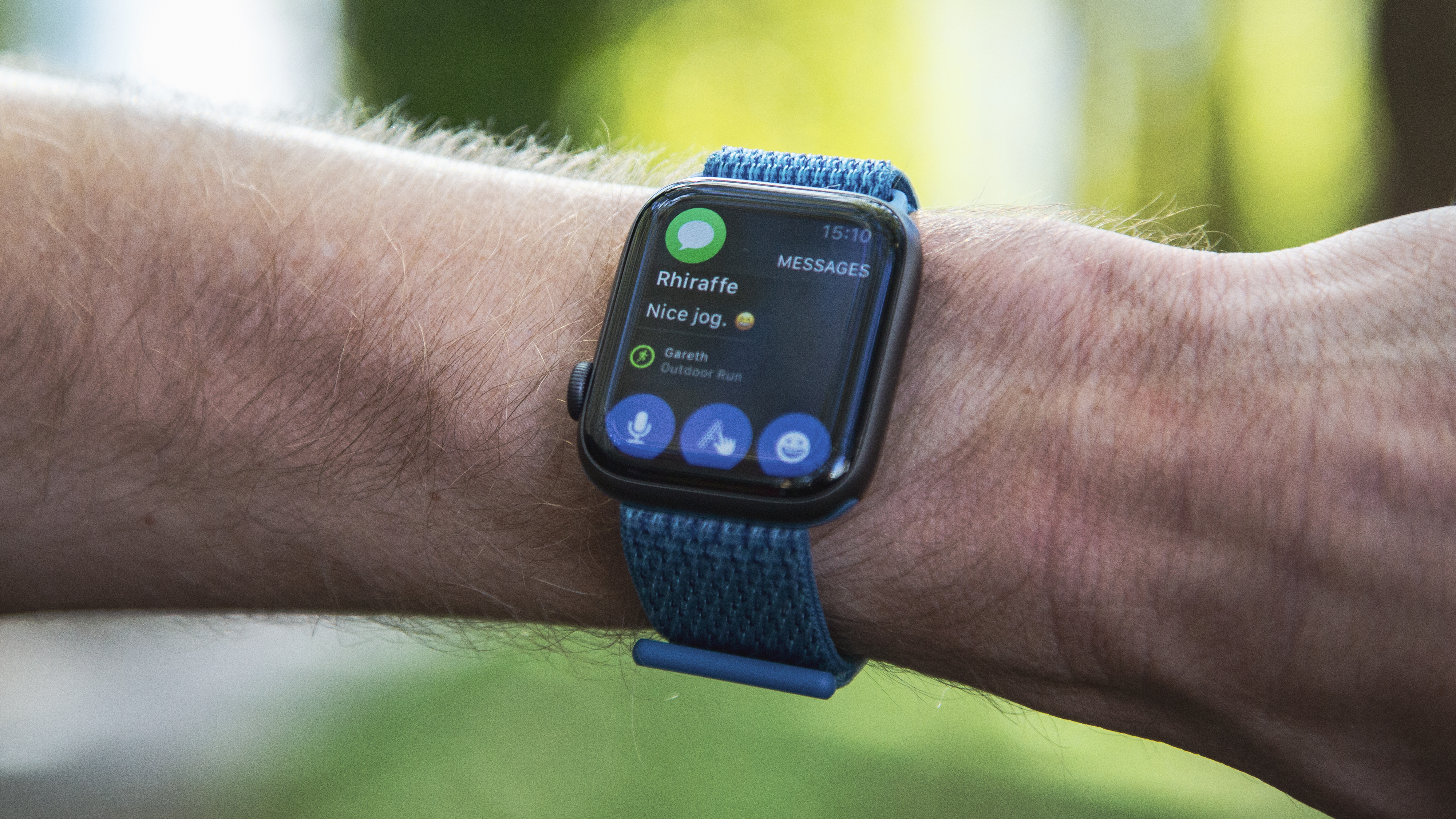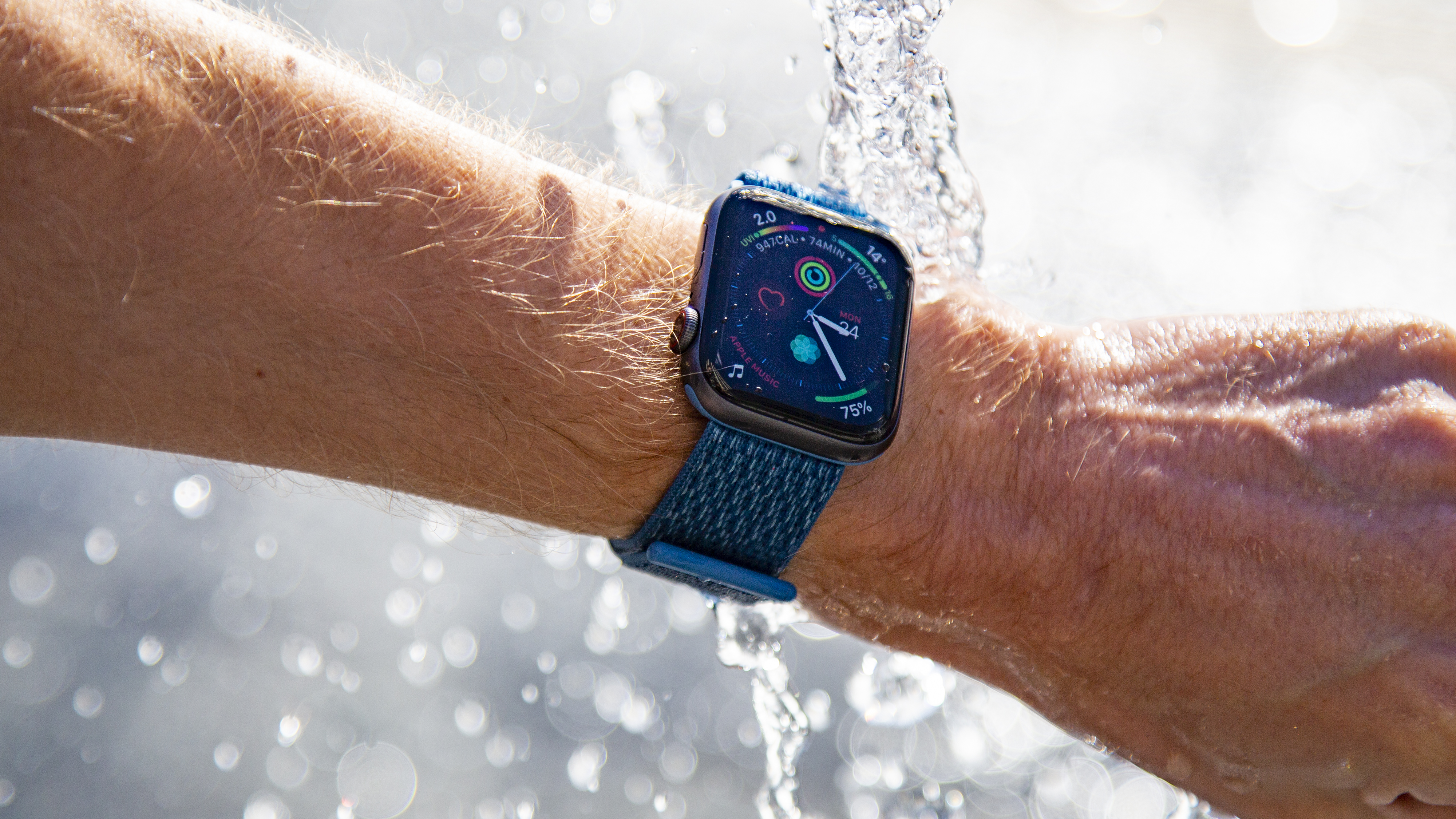Why you can trust TechRadar
The battery life of the Apple Watch brigade has always been something of a mystery to us: Apple keeps quoting an 18-hour, all-day battery life for its watches, and it's doing the same for the Watch 4 - three quarters of a day will get you nicely home to a charger before needing to reach for the power-saving mode that will just fire up the time when prodded and nothing else.
How did we find the experience? Once again, far better. Let's look at some stats: taking the Apple Watch 4 off the charger at 7.30AM, we were still left with 44% battery at midnight before going to bed.
Sleeping for seven hours and leaving the Watch on overnight, we saw it drop abother 21% in that time, meaning we needed to stick it on a charger pretty quickly if we were going to get through the day. The good news is the magnetic charging cable still exists - so you can easily just get juicing on your Apple Watch (although be careful that you don't kick it off the charge, which we've done very easily multiple times.
Our confidence that the Apple Watch 4 could last for two days seems to be founded well, as the next test of the device - taking it off charge at 11AM - we saw a battery drain of 52% from the morning until 2AM, showing that the longevity seems to be around two days if you don't do any dedicated exercise with this device.

However, as you might expect, when pumping up the GPS and going for a dedicated run, you'll destroy the battery faster than you would just having it tethered to your phone. We went out for an 8.5 mile run for an hour with the Watch and listened to music for half of that - and that saw the battery drain reach 20% in that time.
Take off the extra power needed to play that music (it was Daft Punk on repeat because that was the only song that had inexplicably transferred, and there's only so many times you can hear the same upbeat melodies before wanting to rip off your own ears) and you'll around a 15-18% drop off.
This is bang on the six hours that Apple is touting on GPS - in a bid to win over more fitness enthusiasts looking to improve their time but not really push the limit of what a Watch can do.
We then decided to test the Apple Watch's capabilities when tethered to a phone, and therefore not needing the GPS or to stream music - there, we saw a two and a half hour run lose only 21%, so if you wanted just a second screen during a race, the Watch 4 will be able to last for ages.
The battery life on the Apple Watch 4 far exceeds Apple's 18-hour claims - we need to find out the conditions the brand is basing this usage pattern on - as far as we can tell you'll sometimes get two days' use out of this watch if you're a bit lighter on usage.
We should say it's impressive that Apple has managed to thrust so much technology and tracking equipment into the small frame and still maintain the battery as it has, but the new S4 chipset inside certainly makes things zip along faster than before as well as being that little bit more efficient too as a result.
A recent iFixit teardown has shown that the battery is actually smaller in the Watch 4 over the Watch 3, and yet we found that the power drain was largely similar, even with more pixels to power.
The new W3 wireless chip can connect to your phone or a pair of headphones easily to send data over more quickly, which is another boost when you're trying to save battery (although Apple mandates that the Watch 4 must be on charge when it's taking in a load of data like Music or podcast upgrades.
That said, Apple is still really missing a trick here. If it could get to a four day battery life somehow - and we say somehow as it’s not possible to just cram more mAh into the frame and suddenly realize double the longevity, although it has shed some this year - then the Watch 4 could be a great sleep tracker as well.
That’s the bit that feels missing for us - not being able to track sleep is a big miss here and we feel it’s the kind of thing Apple could do rather well.
Music and podcasts
- Larger capacity for more music
- Podcasts now supported
- Stream music through data without a connected phone
Having music coming from your wrist is an absolute dream when you’re exercising, as the need for a bulky phone is wiped away.
Spotify might be the music service of choice for many, but if you’re more into Apple Music then you’ll really get a kick out of the Watch 4. With 16GB of onboard storage, you can chuck loads of songs in there, and play them all from your arm via Bluetooth headphones.
Siri is pretty handy at helping you call up playlists on the go, tuning into Beats radio or playing some songs based on the mood you’re in - whether that’s workout music or something more focused to help you concentrate.
Apple also cleverly makes the first thing you see when playing music - either from your phone or on the watch - the Now Playing screen, so you’ve always got easy access to your tune control.
With WatchOS 5, Podcasts are finally supported, and as they’re a little lighter on the storage you can download reams of the latest stuff and it’ll transfer quietly to your device to be played back at your leisure.

What about getting content onto the Watch though? Initially, when putting music on the Apple Watch we encountered something of an issue: we couldn’t get anything to sync across.
Yes, we sorted it (the issue of having more than one Apple Watch previously paired was the cause).
However, it highlighted a big issue you’ll have using the Apple Watch 4 when away from the iPhone: it’s very hard to check whether songs or podcasts have synced across properly.
For instance, we looked at the storage and it said that we had 2.2GB of songs in there. This was right, as we’d asked the Watch, which should have 16GB of onboard storage, to download loads of playlists when it was connected to power overnight.
We went out with music playing over a pair of Bluetooth headphones - excellent stuff, no worries with that. After two songs, however, the Watch wouldn’t play any longer and just told us to connect to the internet.
Back at the ranch, we tried to get things to sync, but despite having all the playlists confirmed and the Watch 4 on power, it still didn’t work. Except… two songs had somehow made it across, out of a request of thousands.
The same thing happened with the podcasts - set off with the sound playing and 10 minutes later it cut out. There’s no clear and obvious way of knowing if a song or podcast has made it onto the Watch, short of opening the app (where you have to connect Bluetooth headphones to enter the music app, irritatingly you can’t play it through the louder speaker) to see which songs have actually downloaded.
However, this is easily rectified - as we said, once we unpaired the phone and watch and then re-connected them, songs started to stream across - but not all of them, despite leaving the Watch on power by the device. It's just too hard and slow of a process to be comfortable with.

Usually we’d say this isn’t much of an issue, but we’re now in a world where many people will be seeing the Watch 4 as the second smartwatch they’ve bought from Apple, and they'll be expecting more from the device.
The other option for listening to music or podcasts is to use the LTE data connection when paired with a phone running a network that supports Watch data (you can see details of those that are supported in the UK and US in the section on the front page of this review).
We haven’t been able to test the data connection on our Watch 4 just yet, but we’ll be updating this review in the coming days to reflect this functionality. However, we’re assured that it’s the same as on the Watch 3 from last year, and we found that the data was an excellent way to listen to music on the go if you can’t be bothered to sync it across.
You’ll mostly be connected to your phone, so battery life on LTE will rarely be a worry and more of a ‘nice to have’ feature within the device.

Gareth has been part of the consumer technology world in a career spanning three decades. He started life as a staff writer on the fledgling TechRadar, and has grew with the site (primarily as phones, tablets and wearables editor) until becoming Global Editor in Chief in 2018. Gareth has written over 4,000 articles for TechRadar, has contributed expert insight to a number of other publications, chaired panels on zeitgeist technologies, presented at the Gadget Show Live as well as representing the brand on TV and radio for multiple channels including Sky, BBC, ITV and Al-Jazeera. Passionate about fitness, he can bore anyone rigid about stress management, sleep tracking, heart rate variance as well as bemoaning something about the latest iPhone, Galaxy or OLED TV.
